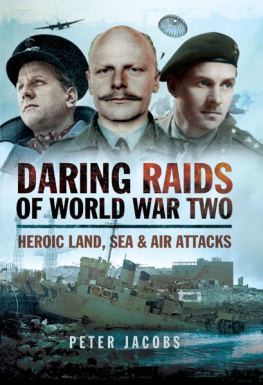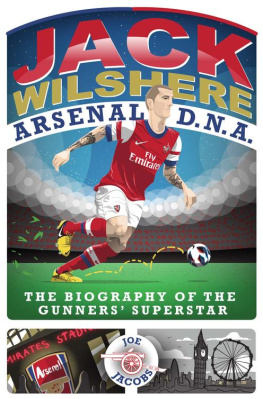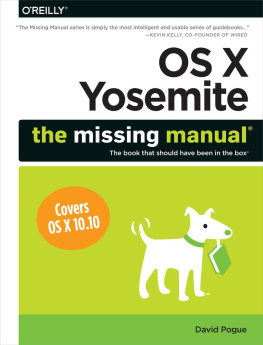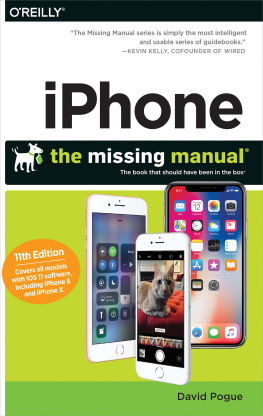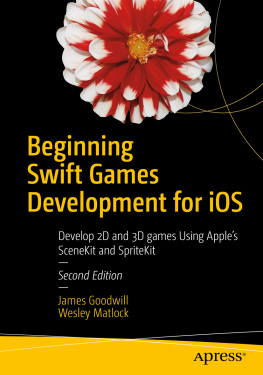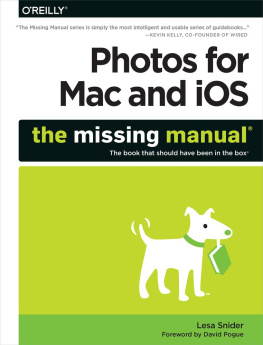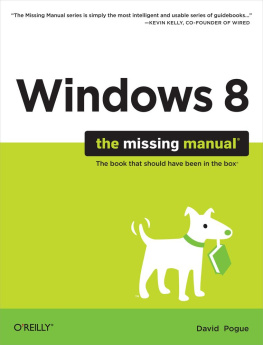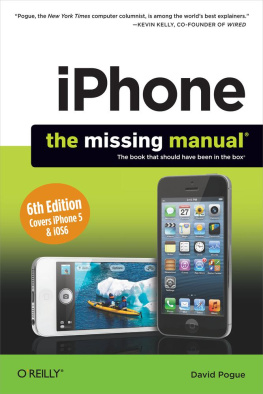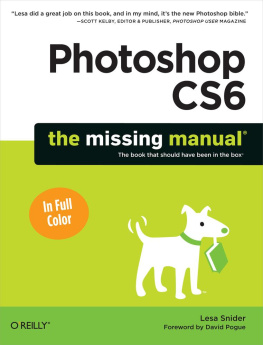Jacobs - The Missing Manual for Swift Development
Here you can read online Jacobs - The Missing Manual for Swift Development full text of the book (entire story) in english for free. Download pdf and epub, get meaning, cover and reviews about this ebook. year: 2017, publisher: leanpub.com, genre: Home and family. Description of the work, (preface) as well as reviews are available. Best literature library LitArk.com created for fans of good reading and offers a wide selection of genres:
Romance novel
Science fiction
Adventure
Detective
Science
History
Home and family
Prose
Art
Politics
Computer
Non-fiction
Religion
Business
Children
Humor
Choose a favorite category and find really read worthwhile books. Enjoy immersion in the world of imagination, feel the emotions of the characters or learn something new for yourself, make an fascinating discovery.

- Book:The Missing Manual for Swift Development
- Author:
- Publisher:leanpub.com
- Genre:
- Year:2017
- Rating:4 / 5
- Favourites:Add to favourites
- Your mark:
- 80
- 1
- 2
- 3
- 4
- 5
The Missing Manual for Swift Development: summary, description and annotation
We offer to read an annotation, description, summary or preface (depends on what the author of the book "The Missing Manual for Swift Development" wrote himself). If you haven't found the necessary information about the book — write in the comments, we will try to find it.
The Missing Manual for Swift Development — read online for free the complete book (whole text) full work
Below is the text of the book, divided by pages. System saving the place of the last page read, allows you to conveniently read the book "The Missing Manual for Swift Development" online for free, without having to search again every time where you left off. Put a bookmark, and you can go to the page where you finished reading at any time.
Font size:
Interval:
Bookmark:
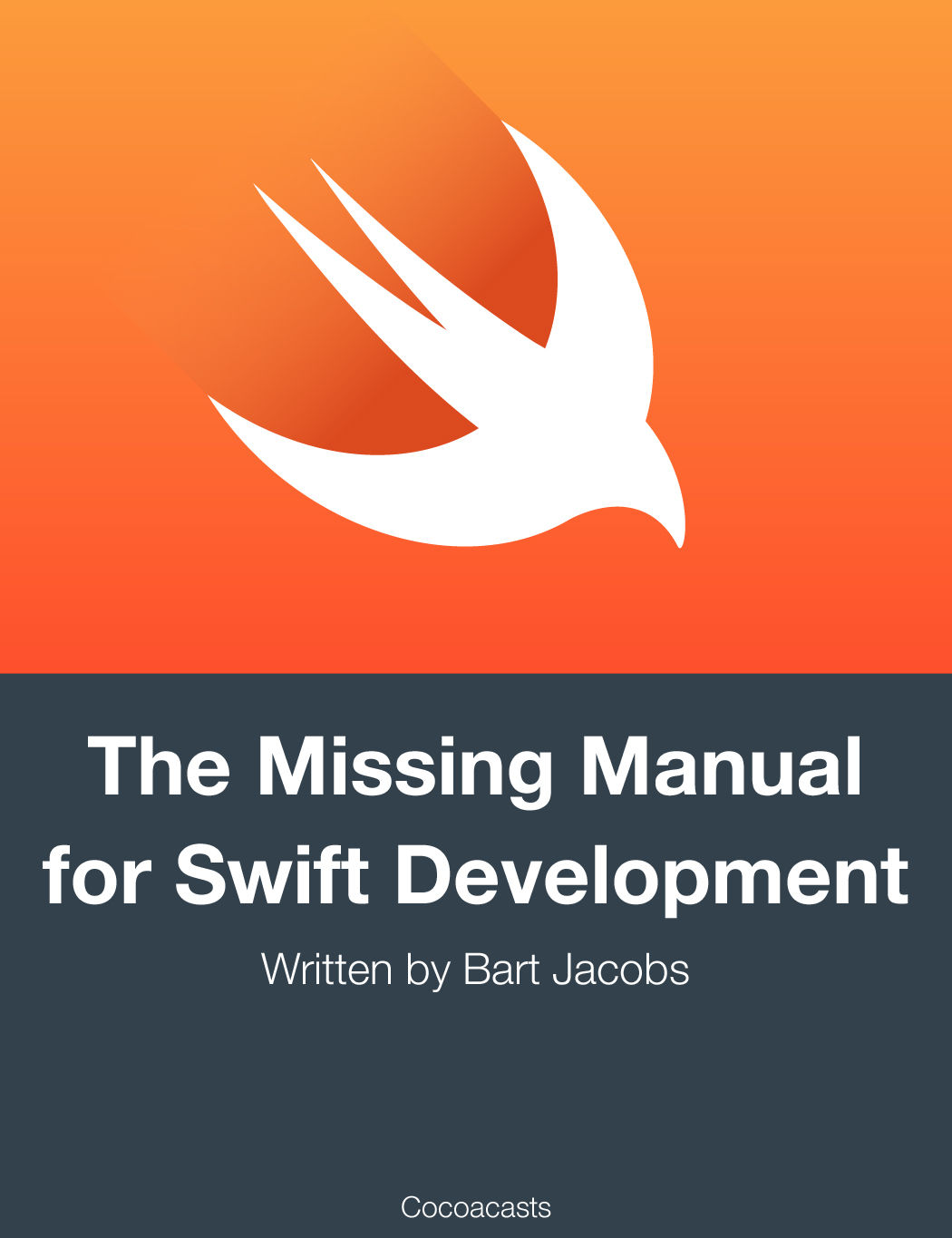
This book is for sale at http://leanpub.com/the-missing-manual-for-swift-development
This version was published on 2017-09-27

* * * * *
This is a Leanpub book. Leanpub empowers authors and publishers with the Lean Publishing process. Lean Publishing is the act of publishing an in-progress ebook using lightweight tools and many iterations to get reader feedback, pivot until you have the right book and build traction once you do.
* * * * *
The title of my book, The Missing Manual for Swift Development , accurately describes what I have in store for you. Its the guide I wish I had when I started out as a software developers years and years ago.
The Missing Manual for Swift Development is a summary of what Ive learned over the years building software for Apples ecosystem. Many of the lessons in my book I learned from experts in their field and, unfortunately, just as many I learned the hard way. I hope that some of the topics in this book can help you on your way to become remarkable in what you do. Thats your goal. Is it not?
Writing a few lines of Swift is surprisingly easy. Once you start to dig deeper, though, you discover that building an application for Apples ecosystem is more challenging than it seems. The Missing Manual for Swift Development outlines the challenges you face along your journey and how to overcome them.
Some of the more obvious topics I cover include dependency management, source control, code reviews, continuous integration, style guides, working in a team, tooling, project organization and documentation, and release strategies.
The topics I found most interesting to write about, however, are more meta, such as when to break the rules, freelancing and subcontracting, staying productive as a developer, shipping projects, leaving your comfort zone, and dealing with challenging problems.
My book doesnt include many code snippets or sample projects. The goal of this book is to provide insights and answers to questions that are often overlooked or ignored.
The Missing Manual for Swift Development is for every type of developer, but it primarily focuses on Swift and Cocoa development. If youre developing for Apples ecosystem, then youll find a lot of useful information, regardless of your experience.
There are very few shortcuts in software development. You pay a price for most of the shortcuts you read about, one way or another. But there are a handful of shortcuts that can speed up your learning and your career. A proper education is one of them.
I hope that my book helps you in some way, big or small. If it does, then let me know. Id love to hear from you.
Enjoy,
Bart
Developers that come to Apples platforms have many different backgrounds, and some of us are better prepared than others. Regardless of your background, though, you can make sure that youre a good fit for Apples ecosystem by investing in your foundation. Thats the subject of this chapter.
This may sound boring at first, and for some it is boring, but its essential if you plan to create robust, scalable applications and if you want to have a long career in the mobile space.
Theres a slew of reasons why developers are drawn to Apples ecosystem. Many of us make the jump because of the shiny stuff. ARKit and Core ML are good examples of what I like to refer to as shiny stuff. Both are amazing technologies, and Im sure youve seen stunning examples of developers taking advantage of ARKit. ARKit and Core ML are the cherries on the cake. And the cake is your foundation. Without the cake, there are no cherries.
The foundation is what happens to interest me most. It isnt as compelling or visually stunning as ARKit, but its essential for every single application. Not only is that why its so important, but thats also why its worth investing time in your foundation. It pays dividends for a long time. Lets start with the language.
As a Swift developer, the first component of your foundation should be the language you use day in day out. Swift. Since youre reading this, Im going to assume that you already have a good grasp of the Swift language or, at a minimum, youve browsed The Swift Programming Language and youve written a handful of lines in a playground.
Im sure I dont need to convince you of the importance of knowing and understanding the Swift language. How are you going to write a fantastic novel if you dont master the language the novel is written in? Why would this be any different for software development?
But this doesnt mean you need to spend days, weeks, or months learning the Swift language. I recommend a different approach thats more fun and more practical. I dont like spending hours or days learning a new library, framework, or API. I learn best by applying what I read and learn. The same is true for the Swift language.
Start with the basics and use it. You can pick up the basics of any language in no time. But, as with any language, you only get what youve learned by applying it. That means writing Swift. You can use Swift in a playground or start with a simple Cocoa application. Apple did a fantastic job by introducing playgrounds alongside the unveiling of the Swift language. Use them. Launch Xcode, create a playground, and play with Swift.
Many developers will go through a phase in which they struggle with the language. Thats fine. Let yourself be frustrated for a while. Its natural, and it means that youre noticing aspects of Swift that are core to the language. Be skeptical and ask questions.
Based on conversations with students and readers, optionals are one of the most common obstacles developers need to overcome. I genuinely love optionals, but I too was frustrated when they first crossed my path. This wasnt surprising considering my background in Objective-C. As you probably know, Objective-C isnt as strict about nil pointers. Dealing with nil is an entirely different story when youre writing Swift.
If youre still struggling with optionals or dont see how they fit in the language, then I need to ask you to trust the language for now. It will click at some point, but you need to embrace optionals. Dont use the exclamation mark to plow your way through a forest of optionals. Optionals are an integral part of the language and an essential component of one of Swifts key features, safety.
The more you use the language, the more you start to appreciate it. What I tend to do is gradually add more complexity to the code I write. Learn about value types and reference types. Discover what protocols are and why theyre useful. You may want to explore generics at some point. Take a close look at enumerations and find out why theyre so much more powerful than their Objective-C counterparts.
If you think you know the Swift language, then I recommend taking another look at The Swift Programming Language . Every time I read Apples guide, I learn something new. Most of the times, I can directly apply it to the code I write day to day. I love it. Swift was designed to be more expressive, and it feels richer than Objective-C. Thats something you can and should take advantage of in the code you write.
Font size:
Interval:
Bookmark:
Similar books «The Missing Manual for Swift Development»
Look at similar books to The Missing Manual for Swift Development. We have selected literature similar in name and meaning in the hope of providing readers with more options to find new, interesting, not yet read works.
Discussion, reviews of the book The Missing Manual for Swift Development and just readers' own opinions. Leave your comments, write what you think about the work, its meaning or the main characters. Specify what exactly you liked and what you didn't like, and why you think so.


